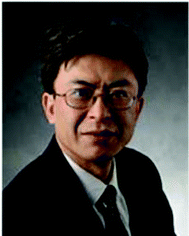Helical micro- and nanostructures
The helix is one of the most fundamental geometrical shapes in nature, which can be found at all length scales: from the structure of DNA to planetary helix nebula. During the last three decades, novel nanotechnologies have been developed that have provided various means for fabricating helices. Based on their unique shape, micro and nanohelices are poised to play an important role in nanoelectronics, optics, microelectromechanical systems (MEMS), nanoelectromechanical systems (NEMS), micro-/nanorobotics, new materials, biology and nanomedicine, which this special issue will highlight. A themed issue appears in Nanoscale with a collection of articles that bring together exciting research from scientists who are working on these fascinating structures at small scales.One of the first helical mechanical springs was developed in the 15th century. Nowadays, helical mechanical springs are usually made from metal and they act as elastic components for operation with tension, compression or torsion. For instance, a planar spiral spring could be used as the energy storage unit for powering a mechanical watch. In contrast to helical springs at large scales, helical micro- and nanostructures have been realized with a variety of materials and their applications are more diverse due to the different physical properties of the nanomaterials. For instance, carbon nanocoils are expected to act as electromagnetic antennas, zinc oxide and SiGe/Si helical nanobelts show potential for MEMS/NEMS because of their piezoelectric and piezoresistive properties, and inorganic and polymeric magnetic micro- and nanohelices are good candidates for remotely actuated active drug delivery in vitro and in vivo, mimicking the helical propulsion of E. coli bacteria.
Original research articles and reviews in the themed collection cover recent advances in the field of helical micro- and nanostructures from the fabrication technology to their applications.
| This journal is © The Royal Society of Chemistry 2015 |



